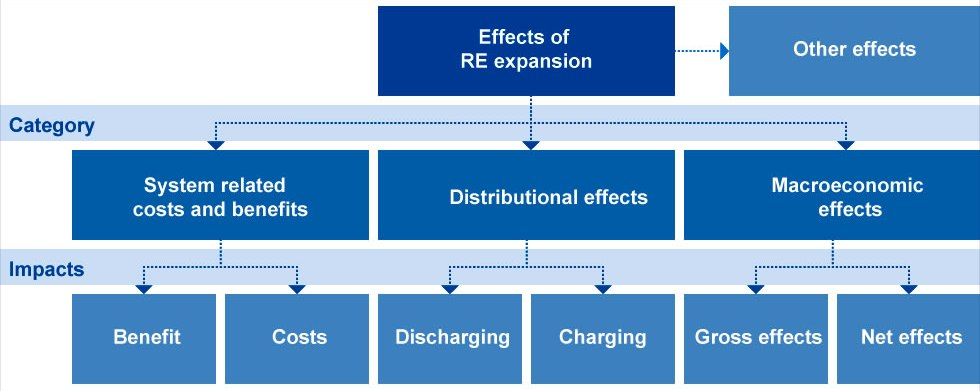The expansion of renewable energies (RE) is being pushed so that, in the long term, renewable energies are able to take over the main share of energy supply. This requires a transformation of the energy system, in which market and system integration play an important role. RE deployment is mainly being driven politically. For its political legitimization and societal acceptance as well as for designing the support policy in the future, the different effects of the politically forced expansion have to be analysed systematically and in detail.
With regard to acceptance aspects, mainly distributional effects are to be analysed; the positive (reliefs or credits) and negative (burdens or debits) effects for different actors. Alongside the current effects of using RE, future effects will also be considered. In addition, attention will also be paid to the technological, economic and instrumental interactions between RE use in the fields of power, heat and transport.
